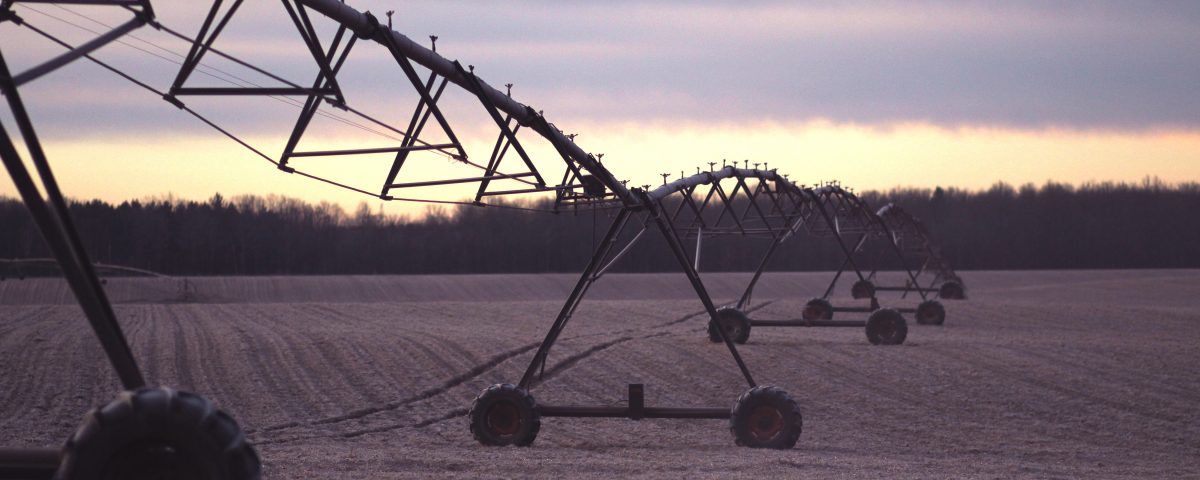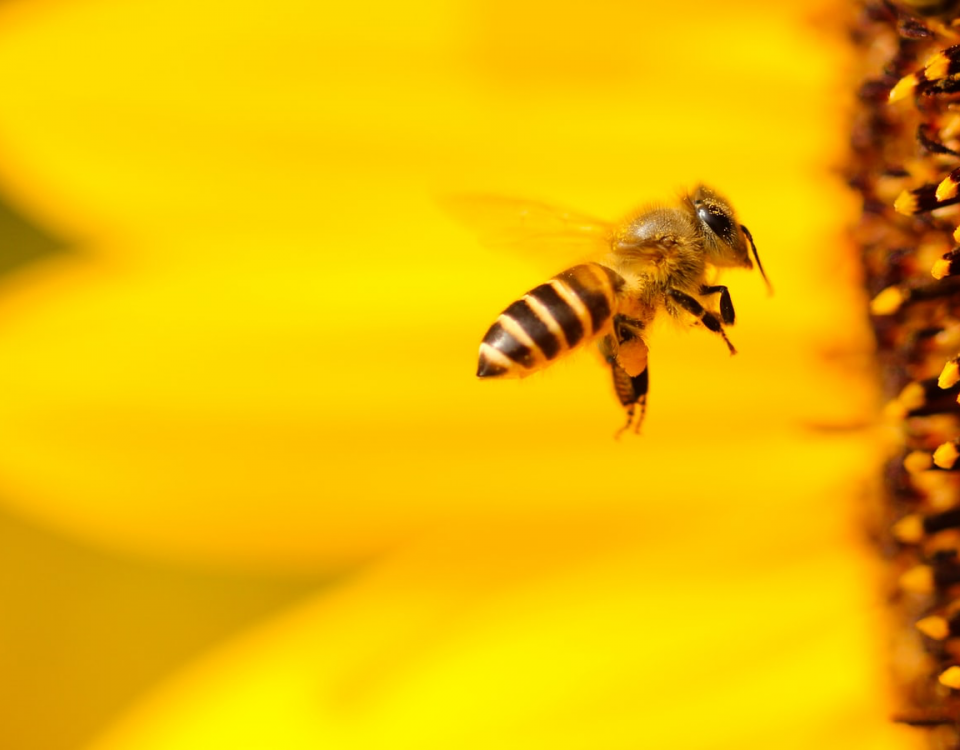What’s Wrong With 2,4-D Herbicide?

Is Glyphosate The New Zyklon B For All Of Us?
October 19, 2016
“No Method Of Insect Control Will Ever Work…”
November 4, 2016(Mother Earth News) In seemingly unrelated stories, activists from Oregon to Mexico City to Berlin have taken to the streets protesting genetically modified (GM) crops, and the Australian government has decided to ban the future sale of most 2,4-D herbicides because of risks to the environment. Meanwhile, the U.S. Department of Agriculture (USDA) plans to deregulate new strains of GM corn and soybean engineered to tolerate spraying with 2,4-D, which experts say will result in profound increases in how much 2,4-D is applied to American farmland.

Photo by Fotolia/Sandra Cunningham
What’s wrong with this picture?
So far, comments on the USDA’s plan are mostly from alarmed citizens who want neither genetically modified varieties nor 2,4-D involved in their food supply. Many sound very surprised!
“You obviously don’t care about your children or their children, or the future of America.” “Growing food with toxins built in, in the long run, is dangerous at best
“You obviously don’t care about your children or their children, or the future of America.” “Growing food with toxins built in, in the long run, is dangerous at best
and potentially deadly. Just because you can do something does not mean you should.”
You can post your opinion on this matter here; additional details on the USDA’s proposed action are included in my previous post on this topic, Take This Chance to Speak Up on Genetically-Modified Crops and 2,4-D herbicide.
You can post your opinion on this matter here; additional details on the USDA’s proposed action are included in my previous post on this topic, Take This Chance to Speak Up on Genetically-Modified Crops and 2,4-D herbicide.
Dangers of 2,4-D Herbicide
The Threat of 2,4-D Herbicide Drift
So, what’s wrong with “a profound increase” in the use of 2,4-D herbicide? First, some scary information, copied verbatim from the National Pesticide Information Center’s fact sheet on 2,4-D:
Because 2,4-D has demonstrated toxic effects on the thyroid and gonads following exposure, there is concern over potential endocrine-disrupting effects.
Work examining incidents of exposure to 2,4-D without simultaneous exposure to 2,4,5-T [which has been banned] has found some association between 2,4-D and non-Hodgkin’s lymphoma.
2,4-D was detected at low concentrations in urine samples collected from all age groups in a large study of the American public.
Traces of 2,4-D were detected in 49.3 percent of finished drinking water samples and 53.7 percent of untreated water samples.
Looking beyond the imminent threats to clean water and health posed by much heavier use of 2,4-D, there is an unanswered question about 2,4-D and dioxins, one of the most potent and persistent group of carcinogens on the planet. Although many known sources of dioxins have been eliminated or controlled, nobody can explain why right now, today, there are enough dioxins in a conventionally produced hot dog to exceed a child’s dietary maximum for the day.
It is suspected that dioxins may be entering the food chain through tainted or substandard batches of 2,4-D, which is sold under more than 80 trade names, often combined with other herbicides, and it is widely available as a generic herbicide at farm supply stores nationwide. The chemical was once manufactured close to home, but current supplies often have international origins and come from chemical plants in Argentina, China, India or Russia. The United States government has decided that these are all trustworthy sources, and has no reality check in place to validate this belief.
The dioxin issue came into sharp focus in Australia last year, when investigative journalists found high levels of dioxin in supplies of 2,4-D (the same supplier that provides 2,4-D to American customers). Australia subsequently cancelled registration of most formulations. The dioxin concern is also made clear in a multinational analysis of 2,4-D sponsored by the Munich-based Institute for Independent Impact Assessment in Biotechnology, as well as the brief submitted to the EPA by the Center for Food Safety. It said:
“EPA should undertake a comprehensive review of 2,4-D-related dioxin. … To briefly summarize, CFS found that EPA is relying heavily on pesticide industry assurances of reduced levels of dioxin contaminants in 2,4-D; that independent scientific testing casts great doubt on such assurances, suggesting that dioxin levels in 2,4-D have not declined as claimed by industry; that EPA should itself conduct, or commission independent scientists to conduct, a comprehensive testing program for dioxins in a broad array of 2,4-D formulations; that EPA should consider dioxins generated during the manufacture of 2,4-D, and dioxins emitted during incineration of unwashed 2,4-D jugs, in its overall assessment of dioxins related to 2,4-D.”
Is this not common sense? Isn’t this the sort of thing the EPA is supposed to do? If the EPA and USDA have their way, a whole lot more 2,4-D imported from Argentina, China, India, Russia and other nations will be drenching American soil and polluting our water, with no monitoring for possible dioxins.
Because 2,4-D has demonstrated toxic effects on the thyroid and gonads following exposure, there is concern over potential endocrine-disrupting effects.
Work examining incidents of exposure to 2,4-D without simultaneous exposure to 2,4,5-T [which has been banned] has found some association between 2,4-D and non-Hodgkin’s lymphoma.
2,4-D was detected at low concentrations in urine samples collected from all age groups in a large study of the American public.
Traces of 2,4-D were detected in 49.3 percent of finished drinking water samples and 53.7 percent of untreated water samples.
Looking beyond the imminent threats to clean water and health posed by much heavier use of 2,4-D, there is an unanswered question about 2,4-D and dioxins, one of the most potent and persistent group of carcinogens on the planet. Although many known sources of dioxins have been eliminated or controlled, nobody can explain why right now, today, there are enough dioxins in a conventionally produced hot dog to exceed a child’s dietary maximum for the day.
It is suspected that dioxins may be entering the food chain through tainted or substandard batches of 2,4-D, which is sold under more than 80 trade names, often combined with other herbicides, and it is widely available as a generic herbicide at farm supply stores nationwide. The chemical was once manufactured close to home, but current supplies often have international origins and come from chemical plants in Argentina, China, India or Russia. The United States government has decided that these are all trustworthy sources, and has no reality check in place to validate this belief.
The dioxin issue came into sharp focus in Australia last year, when investigative journalists found high levels of dioxin in supplies of 2,4-D (the same supplier that provides 2,4-D to American customers). Australia subsequently cancelled registration of most formulations. The dioxin concern is also made clear in a multinational analysis of 2,4-D sponsored by the Munich-based Institute for Independent Impact Assessment in Biotechnology, as well as the brief submitted to the EPA by the Center for Food Safety. It said:
“EPA should undertake a comprehensive review of 2,4-D-related dioxin. … To briefly summarize, CFS found that EPA is relying heavily on pesticide industry assurances of reduced levels of dioxin contaminants in 2,4-D; that independent scientific testing casts great doubt on such assurances, suggesting that dioxin levels in 2,4-D have not declined as claimed by industry; that EPA should itself conduct, or commission independent scientists to conduct, a comprehensive testing program for dioxins in a broad array of 2,4-D formulations; that EPA should consider dioxins generated during the manufacture of 2,4-D, and dioxins emitted during incineration of unwashed 2,4-D jugs, in its overall assessment of dioxins related to 2,4-D.”
Is this not common sense? Isn’t this the sort of thing the EPA is supposed to do? If the EPA and USDA have their way, a whole lot more 2,4-D imported from Argentina, China, India, Russia and other nations will be drenching American soil and polluting our water, with no monitoring for possible dioxins.
One of the characteristics that has limited 2,4-D use in the past is that it will injure or kill many broad-leafed crops, including cotton, soybeans, tomatoes, roses, grapes, fruit trees, and many other home garden crops. It does not have a history of safe use, but rather of one drift accident after another. According to a story in the Des Moines Register, drift from 2,4-D used by farmers after World War II is one of the reasons the Midwest lost its grape industry. More recently, Wisconsin grape growers have lost vineyards to 2,4-D drift, and 250,000 acres of Arkansas cotton were damaged by 2,4-D drift in 2012. In California, 15,000 acres of the San Joaquin Valley were accidentally treated with a fog of 2,4-D in the same year.
In home gardens, herbicide drift damage can occur when a neighbor has their lawn treated with herbicides containing 2,4-D, including granular products. In addition to droplets carried on the wind, damage can occur when the herbicide vaporizes and a persistent chemical cloud forms close to the ground. This is what happened last year to organic farmer Will Reed in Tupelo, Miss., who lost his heirloom tomato crop to herbicide drift that came out of nowhere.
Damage to home gardens from herbicide drift is common enough to merit bulletins from numerous state extension service offices, though gardeners have little hope of recovering their losses. As explained in this advisory from the University of Minnesota, “The ‘garden variety’ dispute between neighbors is usually not taken through the trial and appeal process, because of the financial realities of paying for lawyers, expert witnesses, scientific analysis, and other litigation costs.” There are no public resources for residue testing, which can cost $100 to $300 per sample. Tired of being put in this no-win situation, Iowa farmers who don’t want herbicides drifting onto their land are arming themselves with “drift catchers” that capture air samples for analysis.
Rather than forcing organic gardeners and farmers to defend themselves against 2,4-D drift, the USDA needs to change its priorities, get out of bed with Big Ag, and start working to protect our environment and help farmers farm without poisons. Do you feel the push to do something, to share your opinions on GM food crops and ever-present pesticides? You have until midnight on February 24, 2014, to make your voice heard on the deregulation of genetically modified crops that tolerate treatment with 2,4-D. The only thing that will overcome the pressure from chemical companies will be greater pressure from you, the public.
In home gardens, herbicide drift damage can occur when a neighbor has their lawn treated with herbicides containing 2,4-D, including granular products. In addition to droplets carried on the wind, damage can occur when the herbicide vaporizes and a persistent chemical cloud forms close to the ground. This is what happened last year to organic farmer Will Reed in Tupelo, Miss., who lost his heirloom tomato crop to herbicide drift that came out of nowhere.
Damage to home gardens from herbicide drift is common enough to merit bulletins from numerous state extension service offices, though gardeners have little hope of recovering their losses. As explained in this advisory from the University of Minnesota, “The ‘garden variety’ dispute between neighbors is usually not taken through the trial and appeal process, because of the financial realities of paying for lawyers, expert witnesses, scientific analysis, and other litigation costs.” There are no public resources for residue testing, which can cost $100 to $300 per sample. Tired of being put in this no-win situation, Iowa farmers who don’t want herbicides drifting onto their land are arming themselves with “drift catchers” that capture air samples for analysis.
Rather than forcing organic gardeners and farmers to defend themselves against 2,4-D drift, the USDA needs to change its priorities, get out of bed with Big Ag, and start working to protect our environment and help farmers farm without poisons. Do you feel the push to do something, to share your opinions on GM food crops and ever-present pesticides? You have until midnight on February 24, 2014, to make your voice heard on the deregulation of genetically modified crops that tolerate treatment with 2,4-D. The only thing that will overcome the pressure from chemical companies will be greater pressure from you, the public.
Read Barbara Pleasant's full article here.





